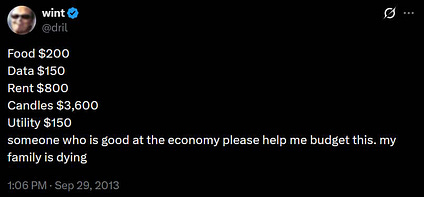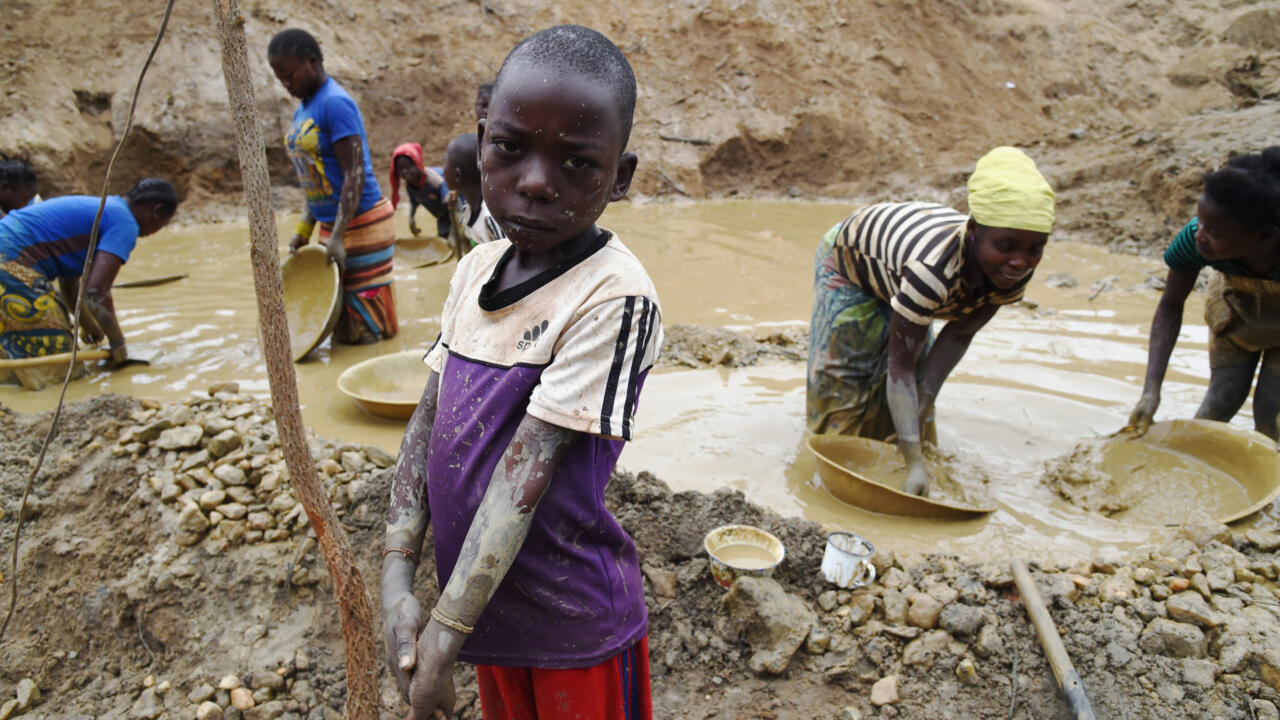Ohio House sends Gov. DeWine two measures to change child labor laws – The Statehouse News Bureau

Proposed Child Labor Law Modifications in Ohio and Implications for Sustainable Development Goals
Legislative Overview
The Ohio House has advanced two legislative measures to Governor Mike DeWine that propose an extension of working hours for 14 and 15-year-old minors. The successful implementation of these measures is contingent upon changes to federal law.
- Senate Bill 50 (SB 50): This bill would amend state law to permit minors aged 14 and 15 to work until 9 p.m. year-round, provided they have consent from a parent or legal guardian. Currently, federal law restricts their work hours to post-7 p.m. only during holiday and summer periods.
- Senate Concurrent Resolution 3 (SCR 3): This resolution formally requests the U.S. Congress to amend the Fair Labor Standards Act of 1938 (FLSA), a foundational federal law that establishes current child labor protections. This amendment is a prerequisite for the changes proposed in SB 50 to take effect.
Stakeholder Arguments and National Context
The proposed legislation has generated significant debate, reflecting a broader national trend of re-evaluating child labor regulations.
Arguments in Favor
- Proponents, including Senator Tim Schaffer and Representative Mark Johnson, argue that extending work hours could help alleviate workforce shortages in sectors like retail and food service.
- It is also suggested that such measures provide young people with valuable work experience and opportunities to earn income.
Arguments Against
- Opponents, such as Representative Lauren McNally, contend that the measures fail to address Ohio’s primary labor needs in skilled trades and healthcare.
- Critics emphasize that the FLSA was enacted to protect children’s rights to education, safety, and a childhood, arguing that weakening these protections is a regressive step.
Alignment with Sustainable Development Goals (SDGs)
The proposed changes to Ohio’s child labor laws have direct and significant implications for several of the United Nations Sustainable Development Goals (SDGs), particularly those concerning labor, education, and inequality.
- SDG 8: Decent Work and Economic Growth
- The legislation directly conflicts with Target 8.7, which calls for immediate and effective measures to “eradicate forced labour, end modern slavery and human trafficking and secure the prohibition and elimination of the worst forms of child labour… and by 2025 end child labour in all its forms.”
- While proponents frame the bills as a contributor to economic growth (Target 8.1), critics argue it undermines the goal of “decent work for all” (Target 8.5) by potentially exposing minors to exploitative conditions and prioritizing low-wage labor over long-term skill development.
- SDG 4: Quality Education
- Extended evening work hours for 14 and 15-year-olds pose a significant risk to their educational attainment. This conflicts with Target 4.1, which aims to “ensure that all girls and boys complete free, equitable and quality primary and secondary education.”
- Increased work commitments may lead to higher dropout rates, reduced academic performance, and limited participation in extracurricular activities, thereby hindering access to quality education and lifelong learning opportunities.
- SDG 10: Reduced Inequalities
- Weakening child labor protections can exacerbate existing inequalities (Target 10.2). Children from lower-income households may feel more pressure to work longer hours, potentially limiting their social mobility and educational pathways compared to their peers from more affluent backgrounds.
- This creates a cycle where economic necessity compromises educational investment, perpetuating intergenerational poverty and widening inequality.
Analysis of Sustainable Development Goals (SDGs) in the Article
1. Relevant Sustainable Development Goals (SDGs)
-
SDG 8: Decent Work and Economic Growth
- This is the most central SDG to the article. The entire discussion revolves around labor laws, specifically those concerning children. The proposal to extend working hours for 14 and 15-year-olds directly addresses themes of employment conditions, labor rights, and economic participation. The debate contrasts the goal of filling workforce gaps with the principle of protecting young workers from exploitation.
-
SDG 4: Quality Education
- This SDG is connected through the arguments against the proposed legislation. Representative Lauren McNally’s statement that the Fair Labor Standards Act was a promise that children “deserve an education” explicitly links child labor laws to educational opportunities. Extending work hours into the evening on school nights could potentially interfere with a teenager’s ability to complete homework, study, and perform well academically, thus impacting the quality of their education.
-
SDG 16: Peace, Justice and Strong Institutions
- The article discusses the legislative process (Senate Bill 50, Senate Concurrent Resolution 3) and the legal frameworks (Ohio state law and the federal Fair Labor Standards Act) that are designed to protect vulnerable populations. The debate highlights the role of institutions in creating and upholding laws that protect children’s rights and safety, which is a core component of this goal.
2. Specific SDG Targets
-
Target 8.7: Take immediate and effective measures to eradicate forced labour, end modern slavery and human trafficking and secure the prohibition and elimination of the worst forms of child labour… and by 2025 end child labour in all its forms.
- The article directly relates to this target by discussing the “loosening [of] child labor restrictions.” While the proposed work is not among the “worst forms” of child labor, the debate is fundamentally about the legal boundaries of child labor. Opponents, referencing the “Fair Labor Standards Act of 1938,” view the proposed changes as a step backward from the goal of protecting children from economic exploitation and ensuring their well-being.
-
Target 8.8: Protect labour rights and promote safe and secure working environments for all workers…
- The Fair Labor Standards Act, which the Ohio resolution asks Congress to amend, is a cornerstone of protecting labor rights in the U.S. The article’s debate centers on whether extending work hours for minors undermines the “safe and secure working environments” this act was designed to create for the nation’s youngest workers. The argument that children “deserve safety” speaks directly to this target.
-
Target 4.1: By 2030, ensure that all girls and boys complete free, equitable and quality primary and secondary education…
- The article implies a connection to this target through the concern that children “deserve an education.” Allowing 14 and 15-year-olds, who are in secondary school, to work later into the evening could negatively impact their ability to focus on their studies, potentially affecting their learning outcomes and the overall quality of their education.
-
Target 16.2: End abuse, exploitation, trafficking and all forms of violence against and torture of children.
- Child labor laws, like the Fair Labor Standards Act, are a primary legal instrument to prevent the economic exploitation of children. The discussion about rolling back these protections, even in a limited way, is relevant to this target, as such laws form a critical barrier against potential exploitation in the workplace.
3. Indicators for Measuring Progress
-
Legal Frameworks as an Indicator:
- The article implicitly uses the existence and strength of national and sub-national legislation on child labor as a key indicator. The primary focus is on Ohio’s “Senate Bill 50” and the federal “Fair Labor Standards Act.” The debate itself is about changing this legal indicator—either strengthening it by maintaining current restrictions or weakening it by extending work hours. The article notes that “more than 60 bills in states across the country have been introduced loosening child labor restrictions,” pointing to a trend in this specific policy-based indicator.
-
Prevalence of Child Labor (Implied):
- While no statistics are given, the official SDG indicator for Target 8.7 is the “Proportion and number of children aged 5–17 years engaged in child labour.” The proposed law in Ohio would change the legal definition of what constitutes permissible work for 14 and 15-year-olds. If passed, it would affect how this indicator is measured and reported within the state, as hours previously considered illegal would become legal.
-
Educational Attainment (Implied):
- The argument that children “deserve an education” implies that indicators such as school attendance rates, academic performance, and high school completion rates for working teenagers are relevant measures. A potential negative impact on these educational indicators is a core part of the opposition’s argument against the bill.
Summary Table of SDGs, Targets, and Indicators
| SDGs | Targets | Indicators |
|---|---|---|
| SDG 8: Decent Work and Economic Growth |
Target 8.7: End child labour in all its forms.
Target 8.8: Protect labour rights and promote safe and secure working environments for all workers. |
The existence and content of legal frameworks governing child labor, specifically the federal Fair Labor Standards Act and Ohio’s Senate Bill 50. The article discusses the proposed changes to these laws as the central issue. |
| SDG 4: Quality Education | Target 4.1: Ensure that all girls and boys complete free, equitable and quality primary and secondary education. | Implied indicators related to educational outcomes for working teenagers. The argument that children “deserve an education” suggests that metrics like school performance and completion rates are at risk. |
| SDG 16: Peace, Justice and Strong Institutions | Target 16.2: End abuse, exploitation… and all forms of violence against… children. | The strength and enforcement of national and state laws designed to protect children from economic exploitation. The article’s focus on amending the Fair Labor Standards Act directly relates to this institutional indicator. |
Source: statenews.org
What is Your Reaction?
 Like
0
Like
0
 Dislike
0
Dislike
0
 Love
0
Love
0
 Funny
0
Funny
0
 Angry
0
Angry
0
 Sad
0
Sad
0
 Wow
0
Wow
0















































/environment-climate-change-and-health-(ech)/water-sanitation-hygiene-and-health-(wsh)/landfill-tuvalu-36092.tmb-1200v.jpg?sfvrsn=5c21fe40_1#)


.jpg.webp?itok=0ZsAnae9#)

























